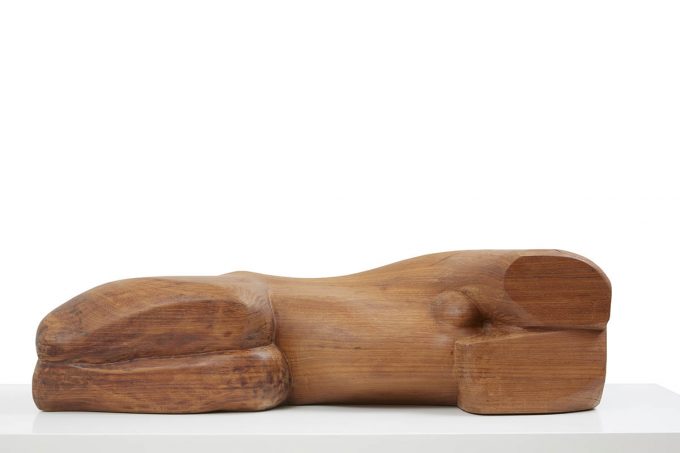Nu Paysage, 1972, Iroko, 30 x 90 x 24 cm. Courtesy of the Barjeel Art Foundation.
For more than half a century, Chaouki Choukini has worked wood into poetry. Born in 1946 in Choukine, Southern Lebanon, his life and practice have unfolded like one continuous carving, with each gesture shaping, sharpening, and hollowing a language of belonging. Trained at the École Nationale Supérieure des Beaux-Arts in Paris, Choukini learned early on that sculpture was just as much rhythm as it was form. It is why his craft always appears to be negotiating presence and absence, abstraction and physicality, softness and roughness.
In his youth, he carved toys at a carpenter’s workshop, a foreshadowing of a lifelong relationship with wood as a “living material”, as he describes it. Later, years spent in Paris with his wife’s uncle Fumio Otani, an expert in Japanese wood sculpture, refined his sensibility toward texture and restraint. A subsequent period in Japan with his wife deepened that sensibility, as the discipline and emptiness of Japanese minimalism began to breathe – and, quite literally, puncture – through his forms. Settling in Paris in the early 1990s, Choukini refined his language through mostly vertical sculptures that spell out stories of endurance and rebirth. While he has worked with bronze, stone, and other materials, wood remains his truest medium.
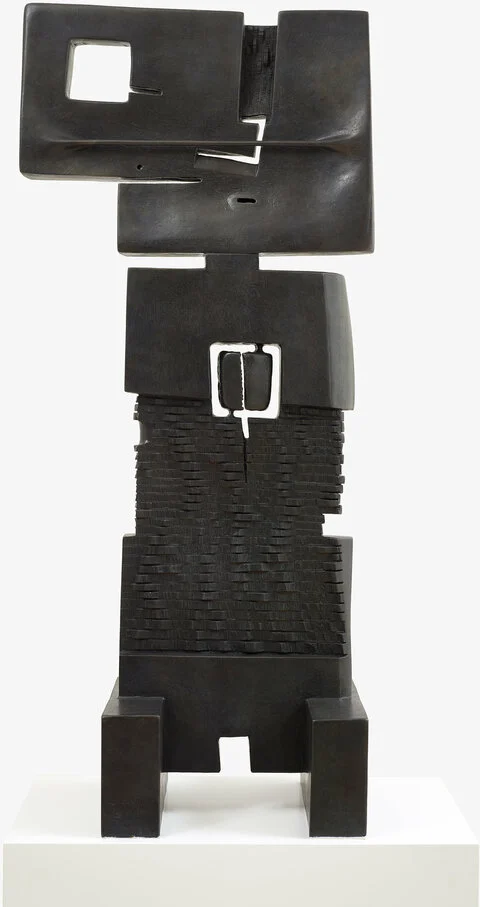
Small Prince of Gaza, 2010, 118.5 x 51.5 x 33.5 cm, Bronze, Edition 1/8. Courtesy of the Dalloul Art Foundation.
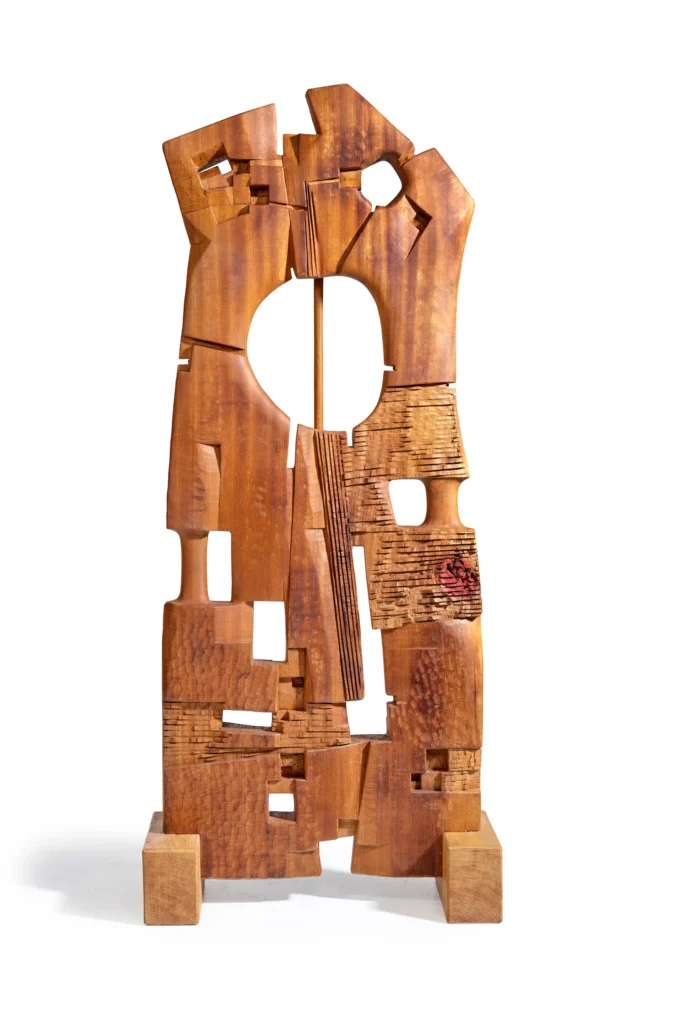
To Beirut, A Beyrouth, Li Bayrût, 2020, Iroko, 153 x 65 x 3 cm. Courtesy of the Dalloul Art Foundation.
Across his long career, Choukini’s sculptures have oscillated between the figurative and the abstract, but always found both in a meditative balance. His elegant curves and cubistic edges are precisely carved yet porous, often suggesting bodies that are also landscapes, and landscapes that are also memories. In his earlier works, such as Nu Paysage (1972), he diluted the human figure into the land itself and, at that, boundaries between earth and flesh – both of which bear the marks of time and labor.
As art historian Morad Montazami writes, Choukini’s sculptures inhabit “hybrid organic/mechanic, abstract/figurative” forms – effectively, spaces that refuse completion. They expand, contract, and invite viewers to traverse their textures as they might memory landscapes. His signature interplay between polished and rough surfaces mirrors this complexity, bringing together conflicting notions of time, of erosion with persistence, and fracture with resilience.
That same pulse persists in his recent exhibition, Citadelles of Today, which was on view at Dubai’s Green Art Gallery earlier this year. Here, Choukini evokes the architectural memory of the Middle East, from the traditional brickwork of ancient citadels in Lebanon, Syria, and Iraq, to the seismic fragility of cities remade and undone by time. His citadels emerge not as monuments of power, but sanctuaries of care.
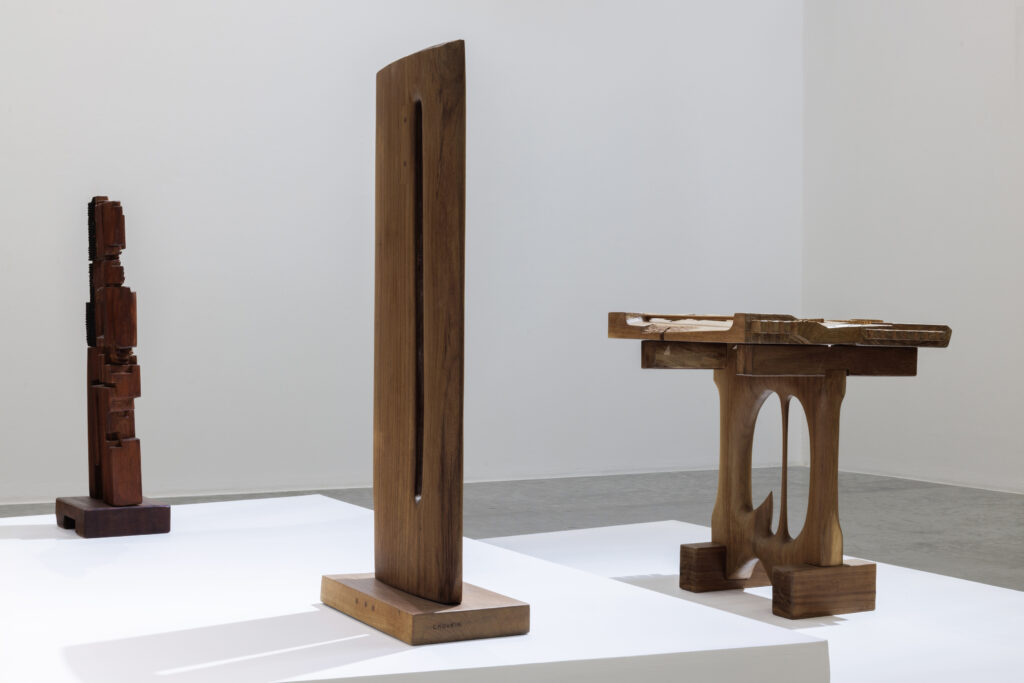
Citadelles of Today, Exhibition view, Green Art Gallery Dubai, 2024. Courtesy of Green Art Gallery Dubai.
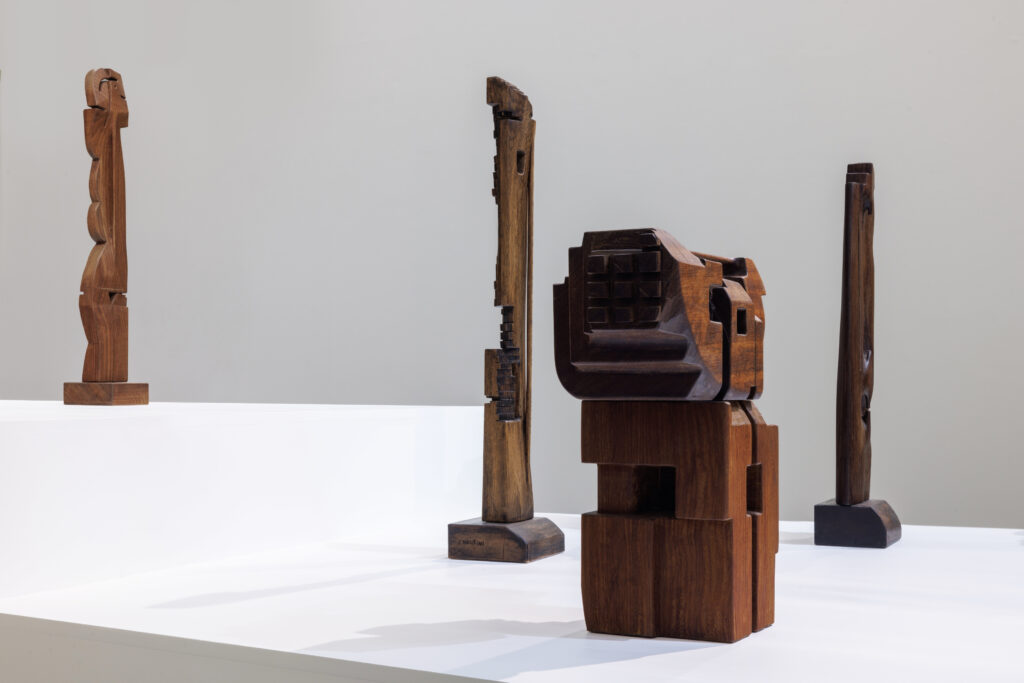
Citadelles of Today, Exhibition view, Green Art Gallery Dubai, 2024. Courtesy of Green Art Gallery Dubai.
There is, always, a sense of balance that Choukini achieves through years of near-completion, as he refines a work without ever quite sealing it. This open-endedness grants his sculptures a vitality that resists monumentality. Persistence, rather than permanence, and an alertness to change that comes with endurance.
Choukini’s art, in the end, is a geography of feeling. It speaks to the landscapes that shaped him. The hills of southern Lebanon. The calm rigor of Japan. The exilic poetics of Paris. Rather than merely calling wood a living material, Choukini has turned it into one, absorbing silence, remembering touch, and continuing to breathe long after the carving stops.

